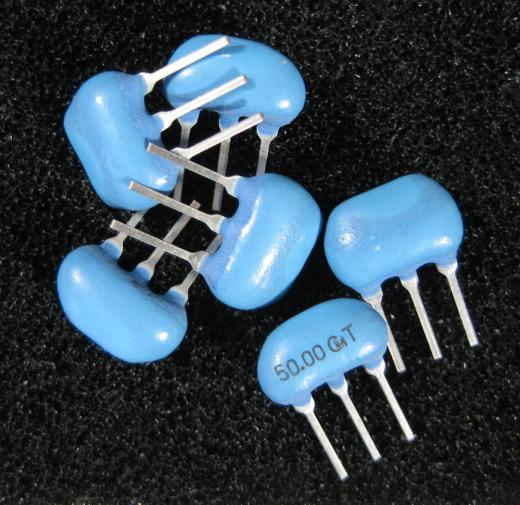What is Leakage Current?
Leakage current is the unintended loss of electrical current or electrons. The term is often applied to computer microprocessors, which are the chips that perform calculations and process data. In fact, leakage is a problem that inhibits faster advancements in computer performance. The term also applies to electronics and consumer electronics devices.
Semiconductors make use of millions of transistors to perform calculations and store data in computer microprocessors. Transistors are devices used to amplify and switch electronic signals. Leakage current in semiconductors occurs at the transistor level. As semiconductor manufacturers continue to make transistors smaller to squeeze more onto a chip, problems with leakage increase. Smaller transistors have thinner insulating layers, causing more leakage current.

Leakage in transistors causes semiconductors to require more power to operate, as they must replace the current lost to leakage. The leakage current also generates heat as it leaks away, which leads to degraded performance for the semiconductor. When the heat from leakage is combined with the heat generated by the semiconductor's normal operation, it can become a significant problem. Excessive heat can eventually cause circuit failure. Designers may take a number of different approaches to reduce the amount of leakage.
In electronics, leakage current refers to the unintended loss of energy from a capacitor. A capacitor is a passive electric component that can create an electrical field and that can store energy. The capacitor discharges slowly at all times as a little bit of electrical current passes through the capacitor's electronic components, including transistors and diodes, at all times. Even when the capacitor is turned off, the small amount of current is passing through, which causes the problem. Leakage current in electronics also can refer to the current that flows through a ground conductor.
For consumer electronics devices, leakage current can refer to the device pulling electrical current, even when powered down. Some devices, such as cell phones, will pull a little bit of current, even when the battery is already fully charged. Some other battery-charged devices might pull a little bit of power, even when in sleep mode, which also is referred to as leakage current. This is one reason why experts recommend unplugging cell phone chargers and other devices when they are not in use; over time, this current leakage can add up and raise energy bills.
AS FEATURED ON:
AS FEATURED ON:











Discussion Comments
At work our relay technicians use a leakage current tester when they go out into the field. These devices are very accurate and a great help in troubleshooting problems on the electrical grid.
David09 -- I saw some program on television where a guy said he could “recharge” a battery using orange juice or something like that. I know it sounds far-fetched but this guy claims he did it.
@miriam98 – That happened to me too. It was the same story, a digital camcorder battery. Batteries are most likely to leak current because they have chemical charges.
One of the most common examples of leakage current in consumer electronics is digital camcorder batteries. Years ago I bought an “8 hour battery” for my digital camcorder. I guess it was indeed an 8-hour battery at first, but I didn’t take good care of it. I had a habit of leaving the battery inside the camera while the camera was not in use.
What happened was that little by little it leaked out current. Of course, I recharged it, but I noticed that with each charge the amount of “charge” the battery would hold got smaller and smaller. Before I knew it, my “8 hour battery” became a “1 ½ hour battery.” I had no way of measuring leakage current other than seeing my charge gradually diminish. At first I thought it was defective and didn’t realize what was going on until someone told me that it was leaking current because I left the battery inside.
Post your comments